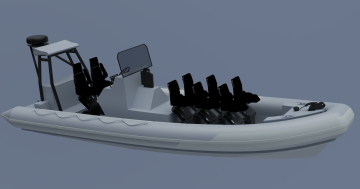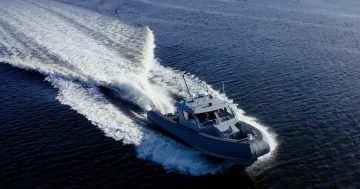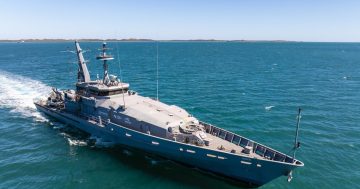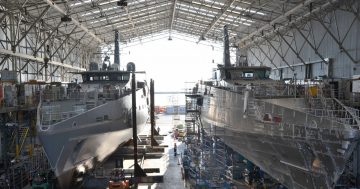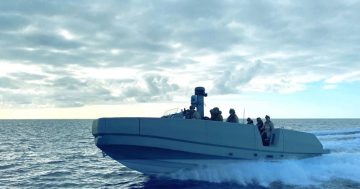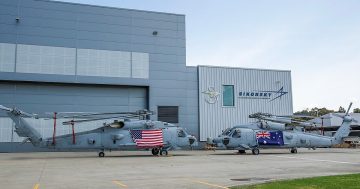
The first of three Sentinel Boats LMCs has entered service with the Royal New Zealand Navy. Photo: Sentinel Boats.
The first of three high-technology general-purpose boats designed and built by Hobart-based Sentinel Boats have entered service with the Royal New Zealand Navy.
Formerly called PFG, Sentinel Boats designed the craft with a team that includes naval architecture firm One2three, and integration specialist Bellinger Systems.
The 12.5 metre-long Littoral Manoeuvre Craft (LMC) are being deployed at HMNZS Matataua at Davenport in Auckland, as fast, dependable and fit-for-purpose vessels. HMNZS Matataua is part of the RNZN’s Littoral Warfare Force.
The vessels are constructed from polyethylene as opposed to the more commonly used fibreglass or aluminium. This makes them extremely durable, highly resistant to impact and gives them a very low magnetic and acoustic signature.
They are powered by twin Cummins 550 hp diesel engines coupled with HamiltonJet waterjets giving them a speed of more than 40 knots, and a range of more than 150 nautical miles when fully loaded. They can be configured for mission profiles such as dive operations, hydrographic survey support and reconnaissance.
Commanding officer of HMNZS Matataua Commander Trevor Leslie said the LMCs would provide a vital link between coastal operations and tactical insertion of diving and hydrographic specialists, as well as providing a reconnaissance option.
“These vessels will allow us to go further and faster with more personnel, and once inserted we can do so much more,” he said in an RNZN release. “In that regard they’re a real game-changer for Matataua.”
Commander Leslie said the LMCs could comfortably transport six divers with military diving equipment and the smaller Zodiac boats, or hydrographic survey operators with underwater autonomous vehicles or even an infantry section of 10 soldiers with packs and rifles.
RNZN Able Seaman Combat Specialist James Perham described the LMC’s handling as “like a train on tracks”.
“A typical jet boat, when you turn hard, the rear end skids out a bit, whereas with the hull design of this boat, it just digs in like a boat with outboards, so this means we can turn on a dime,” ASCS Perham said.
“Once you get the feel for the LMC and put the time in on the helm it drives like a dream and is far more capable than any other boat that any of the SCS personnel at MATATAUA have driven, it’s so much more capable.”

A Sentinel Boats LMC at pace. Photo: Sentinel Boats
In a company release, Sentinel Boats CEO George McGuire said there was growing recognition of the benefits of HDPE in the defence, first response and rescue sectors.
“We are incredibly proud of the LMCs, which are highly versatile and deliver truly unique capabilities to the RNZN, including the ability to launch and recover a 5.3 metre tender,” he said.
“These boats have been developed as a true partnership between Sentinel Boats and the RNZN and they are already proving their worth in service applications. They have been described as a ‘game-changer’ by the RNZN.
“We have shown that we are capable of building world-class boats, and the world is taking notice.”


